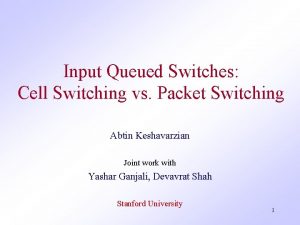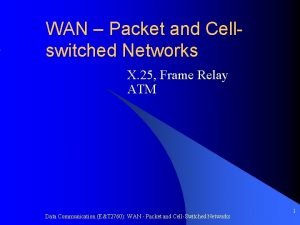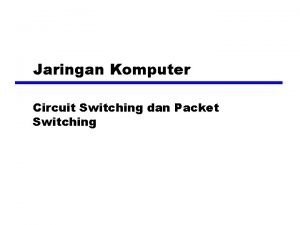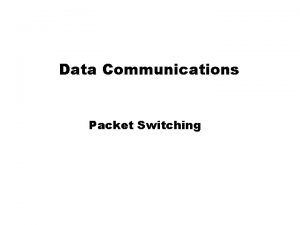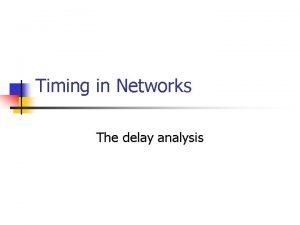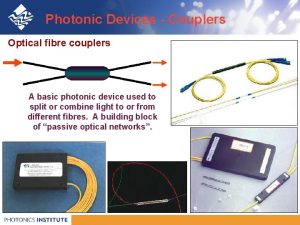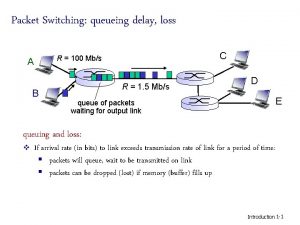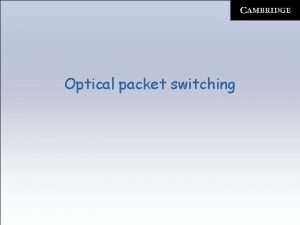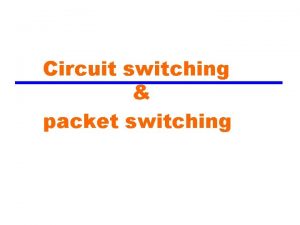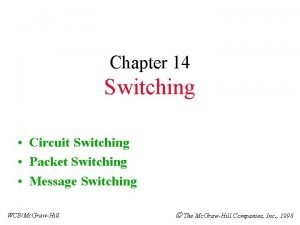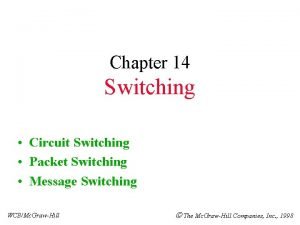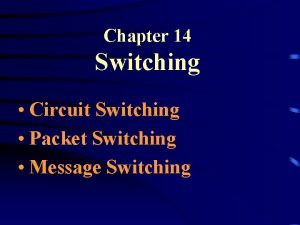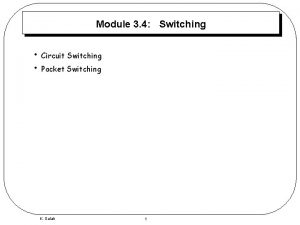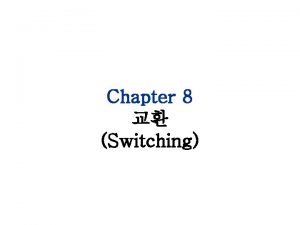Circuit Switching and Packet Switching Switching Networks Long














- Slides: 14

Circuit Switching and Packet Switching

Switching Networks • Long distance transmission is typically done over a network of switched nodes • Nodes not concerned with content of data • End devices are stations —Computer, terminal, phone, etc. • A collection of nodes and connections is a communications network • Data routed by being switched from node to node

Nodes • Nodes may connect to other nodes only, or to stations and other nodes • Node to node links usually multiplexed • Network is usually partially connected —Some redundant connections are desirable for reliability • Two different switching technologies —Circuit switching —Packet switching

Circuit Switching • Dedicated communication path between two stations • Three phases —Establish —Transfer —Disconnect • Must have switching capacity and channel capacity to establish connection • Must have intelligence to work out routing

Public Circuit Switched Network

Circuit Establishment

Circuit Switching Principles • Circuit switching designed for voice —Resources dedicated to a particular call —Much of the time a data connection is idle —Data rate is fixed • Both ends must operate at the same rate

Packet Switching: Basic Operation • Data transmitted in small packets —Longer messages split into series of packets —Each packet contains a portion of user data plus some control info • Control info —Routing (addressing) info • Packets are received, stored briefly (buffered) and past on to the next node —Store and forward

Packet-Switched Network

Use of Packets

Advantages • Line efficiency — Single node to node link can be shared by many packets over time — Packets queued and transmitted as fast as possible • Data rate conversion — Each station connects to the local node at its own speed — Nodes buffer data if required to equalize rates • Packets are accepted even when network is busy — Delivery may slow down • Priorities can be used

Switching Technique • Station breaks long message into packets • Packets sent one at a time to the network • Packets handled in two ways —Datagram —Virtual circuit

Datagram • • • Each packet treated independently Packets can take any practical route Packets may arrive out of order Packets may go missing Up to receiver to re-order packets and recover from missing packets

Datagram Diagram
 Circuit switching vs packet switching vs message switching
Circuit switching vs packet switching vs message switching Packet
Packet A switch in a datagram network uses
A switch in a datagram network uses Cell switching vs packet switching
Cell switching vs packet switching Cell switching vs packet switching
Cell switching vs packet switching Datagram network and virtual circuit network
Datagram network and virtual circuit network Long and short
Long and short Once upon a time a little man running
Once upon a time a little man running Wan packet switching
Wan packet switching Circuit switched network adalah
Circuit switched network adalah Packet switching principles
Packet switching principles Circuit switching timing diagram
Circuit switching timing diagram Fiber bragg gratings
Fiber bragg gratings Queuing delay in packet switching
Queuing delay in packet switching Optical packet switching
Optical packet switching



